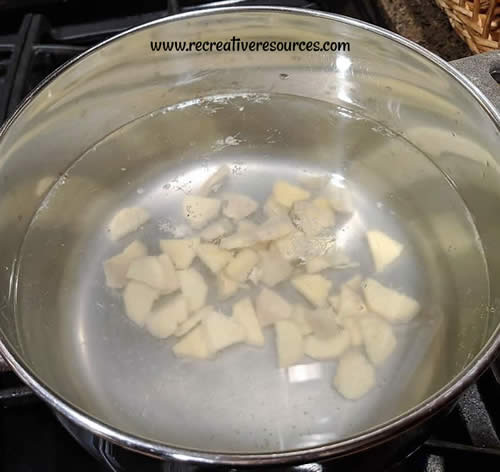 During the fall and holiday season I enjoy the wonderful aromas of cinnamon, pumpkin spice, cloves, apples and one of my personal favorites, ginger. Now, I drink homemade ginger tea all year round, but I'm sharing today because of the it's so warm and cozy this time of year. The smell of brewing ginger is glorious! During the fall and holiday season I enjoy the wonderful aromas of cinnamon, pumpkin spice, cloves, apples and one of my personal favorites, ginger. Now, I drink homemade ginger tea all year round, but I'm sharing today because of the it's so warm and cozy this time of year. The smell of brewing ginger is glorious!
I realize your protocols are quite different these days but I know how creative everyone is, so perhaps you can somehow fit this into your activity program and also into your personal kitchen. If you have a portable stove top then you are good to go!
Before I share the details on how to make this yummy tea, let's go over a few of the health benefits. I want to emphasize that I am not a dietitian or nutritionist of any kind. Please do further research for yourself. Some of the claimed benefits of ginger include: easing stomach issues (digestive problems or nausea), balancing blood sugar, decreasing inflammation, boosting immunity, helping to alleviate muscle aches, and many more.
Again, I don't make these claims but there are many articles on the subject. I can speak on one aspect that I know for sure, which is inflammation. I have arthritis and lasting effects from Lyme disease. When my aches and pains kick into high gear, it's time to brew some ginger tea! It truly helps (in my experience) to decrease the inflammation, which in turn decreases pain. Making homemade ginger tea is one of the easiest things to make and trust me, I can't cook!
Here's how it's done in my kitchen.
Ingredients: fresh ginger, water, honey
 1. Be sure to get organic fresh ginger for best results. You can get it already peeled and cut up if you prefer. 1. Be sure to get organic fresh ginger for best results. You can get it already peeled and cut up if you prefer.
2. Put a big pot of water on the stove and bring to a boil. I use about 96 ounces of water.
3. While the water is heating up, wash, peel and cut the ginger (it's funny looking but easy enough to peel with a knife). I cut up about 1 to 2 inches of ginger for 96 ounces of water. The size of the ginger slices doesn't matter.
4. When the water is boiling, place your peeled ginger in and let it boil for about 10 minutes and then simmer for another 10-20 minutes. The longer the simmer, the stronger the tea. This is when the incredible ginger smell and the magic starts to happen!
5. How to know if it's done? Well, since I'm a terrible cook, I don't have a true recipe for this so I go by the look of it. The water will start to darken. The darker the water, the stronger the tea. I tend to make my tea stronger and if it's too spicy (ginger can have a kick), it's easy to just add a bit of water to the individual serving.
6. How to drink this yummy tea? I personally like my ginger tea cold with nothing added. I let it cool in the pot until it's cool enough for a pitcher and then I put it in the fridge to enjoy cold. Others like it hot with lemon and honey. It's really just a personal preference.
That's basically all there is to it. If you are having residents work with the ginger, please be sure they don't rub their eyes, for it can sting. Of course, it's also important to make mention to abide by any dietary restrictions, allergies, and food-prep precautions. So, will you be brewing up some ginger tea this Fall?
**Try some yummy cinnamon tea next**
|







